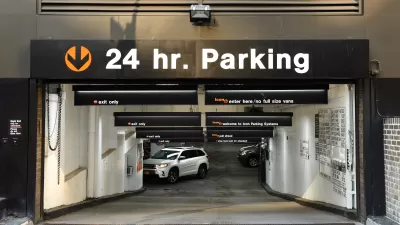A new interactive mapping website launched by the Center for Neighborhood Technology in partnership with The Brookings Institution shows how affordability changes from neighborhood to neighborhood based on housing and transportation.
"When you're stuck in Beltway traffic burning $3-a-gallon gasoline to creep along at walking speed, it offers time to think. Would it be easier if I left home earlier? Would I be better off riding a train? How bad will my commute be in five years? Would life be easier and cheaper if I found a job in Pittsburgh or Nashville or some other place where the roads aren't as crowded and the homes aren't so expensive?
A new Web-based tool developed by the Center for Neighborhood Technology, a Chicago-based urban development think tank, can help put facts behind those daydreams. The CNT developed a Web site, at http://htaindex.cnt.org, that takes into account household expenditures for transportation, along with home prices, to estimate whether a home is truly affordable for households with moderate incomes.
Academics at the CNT argue that a home isn't really affordable if its location forces a household to devote an excessive amount of the family budget to transportation. How much is excessive? They say 18 percent of the area's median pretax income is typical; lowering that to 15 percent would be better. That's on top of the 30 percent of pretax income that they estimate as an affordable budget for a home's mortgage principal and interest plus property taxes and homeowners' insurance, which lenders call PITI.
With gasoline prices nearing $3.50 per gallon and Metro fares that recently increased by the largest amount in the transit system's history, keeping Washington-area transportation costs below those thresholds is only going to become more difficult.
The Web site is a data fest even by wonk standards. It's a map-based tool offering information on housing and transportation costs for 52 metropolitan areas, including the Washington-Baltimore area. You can zoom in on individual neighborhoods and pull up U.S. Census information on the percentage of neighborhood residents who use mass transit, their average monthly spending on transportation, the number of wage-earners and cars per household, and other data. The Web site also displays nearby subway and commuter rail lines and stations."
Thanks to Nicole Gotthelf
FULL STORY: Mapping Transportation Costs for Home Buyers

Maui's Vacation Rental Debate Turns Ugly
Verbal attacks, misinformation campaigns and fistfights plague a high-stakes debate to convert thousands of vacation rentals into long-term housing.

Planetizen Federal Action Tracker
A weekly monitor of how Trump’s orders and actions are impacting planners and planning in America.

San Francisco Suspends Traffic Calming Amidst Record Deaths
Citing “a challenging fiscal landscape,” the city will cease the program on the heels of 42 traffic deaths, including 24 pedestrians.

Defunct Pittsburgh Power Plant to Become Residential Tower
A decommissioned steam heat plant will be redeveloped into almost 100 affordable housing units.

Trump Prompts Restructuring of Transportation Research Board in “Unprecedented Overreach”
The TRB has eliminated more than half of its committees including those focused on climate, equity, and cities.

Amtrak Rolls Out New Orleans to Alabama “Mardi Gras” Train
The new service will operate morning and evening departures between Mobile and New Orleans.
Urban Design for Planners 1: Software Tools
This six-course series explores essential urban design concepts using open source software and equips planners with the tools they need to participate fully in the urban design process.
Planning for Universal Design
Learn the tools for implementing Universal Design in planning regulations.
Heyer Gruel & Associates PA
JM Goldson LLC
Custer County Colorado
City of Camden Redevelopment Agency
City of Astoria
Transportation Research & Education Center (TREC) at Portland State University
Jefferson Parish Government
Camden Redevelopment Agency
City of Claremont





























